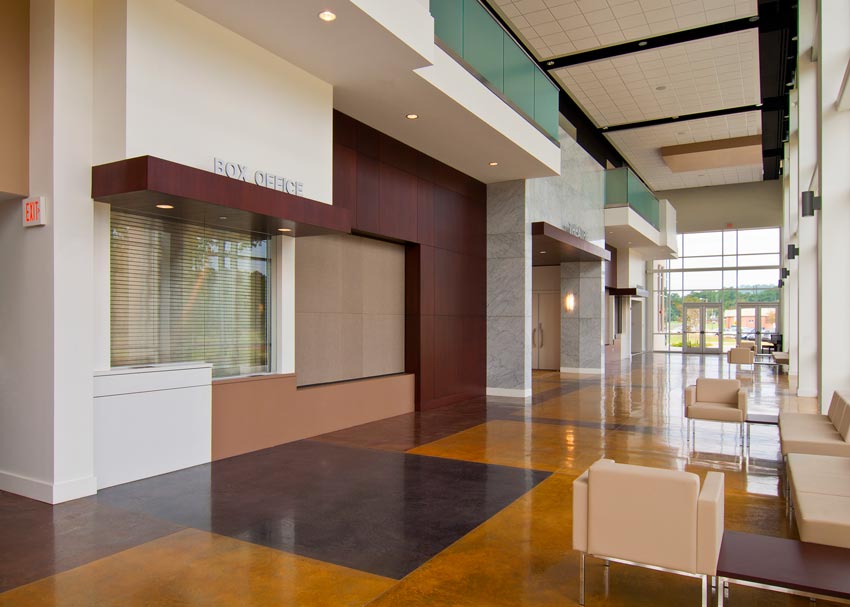Enhancing the Stone
Backing Options
The designer can also select from various backing options. Depending on the manufacturer, these can include aluminum honeycomb, aluminum composite material (ACM), and even glass.
Aluminum honeycomb backing (which we are focusing on in this article), typically ranges from 1/2 inch to 3/4 inch thick. This is the most common type for exterior cladding, bathroom partitions, or areas where high strength is needed.
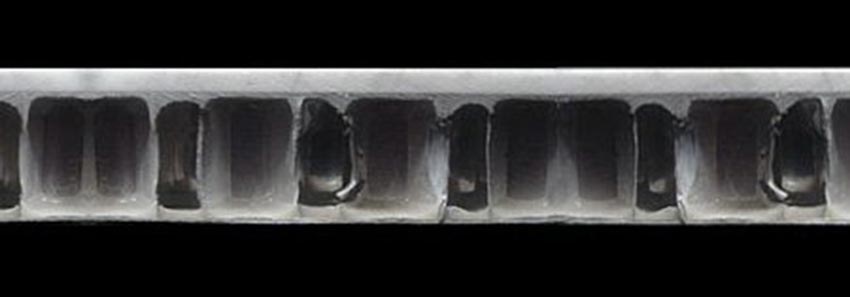
Honeycomb backing on stone
Another backing option is aluminum composite material (ACM), which is typically used on flooring or areas where a thinner material is required. The backing is just 5/16 inch thick. An ACM-backed stone panel is applied directly to a smooth surface with adhesive, and relies on the substrate for support.

ACM backing
Translucent backing is a glass panel. This is used with certain translucent marbles and onyx; it is generally used for lighted bars, backlit walls, or feature panels and ranges from 1/4 inch to 3/4 inch thick.
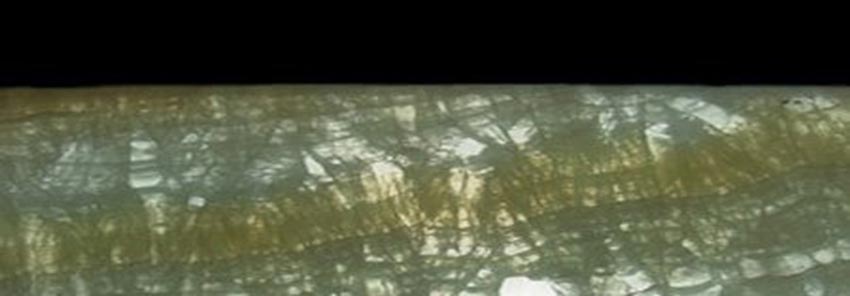
Translucent backing
Installation
For most applications, the panels attach with Z-clips, interlocking aluminum channels, or a concealed screw. The Z-clip or channel is attached to the wall, and a matching Z-clip or channel is on the back of the panel. The panels are then simply hung. Joints can be either caulked with a selected sealant or left open in an open-joint rainscreen. Thanks to the lightness of the panels, they can be installed from a variety of platforms, including scaffolding, boom lifts, scissor lifts, or swing stage scaffolding.
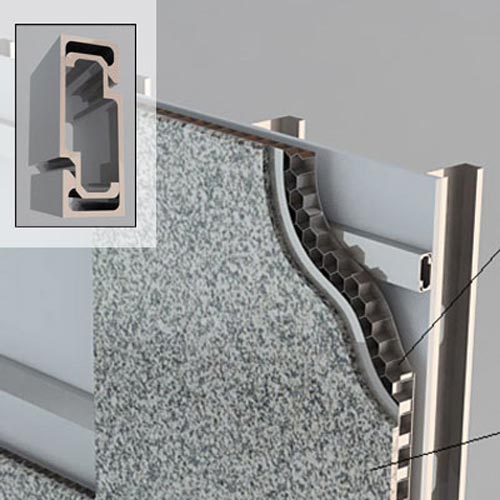
Interlocking channel attachment, used to attach panels to the substrate
Technical Specifications and Performance
When choosing a stone veneer on aluminum honeycomb panel, specifiers should look for a product that has been ASTM tested and where the panels meet or exceed the testing.
Panel installation techniques are designed to improve the safety, durability, and long-term performance. As noted, typical installation for these types of panels is usually with a Z-clip, interlocking channel, or concealed screw. With the Z-clips, they lock into place on a substrate, which locks them into place easily. With the concealed screw, they are screwed to the substrate.
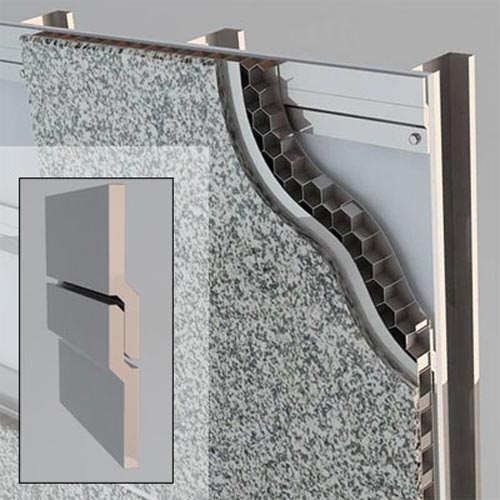
Z-clip attachment, used to attach panels to the substrate





